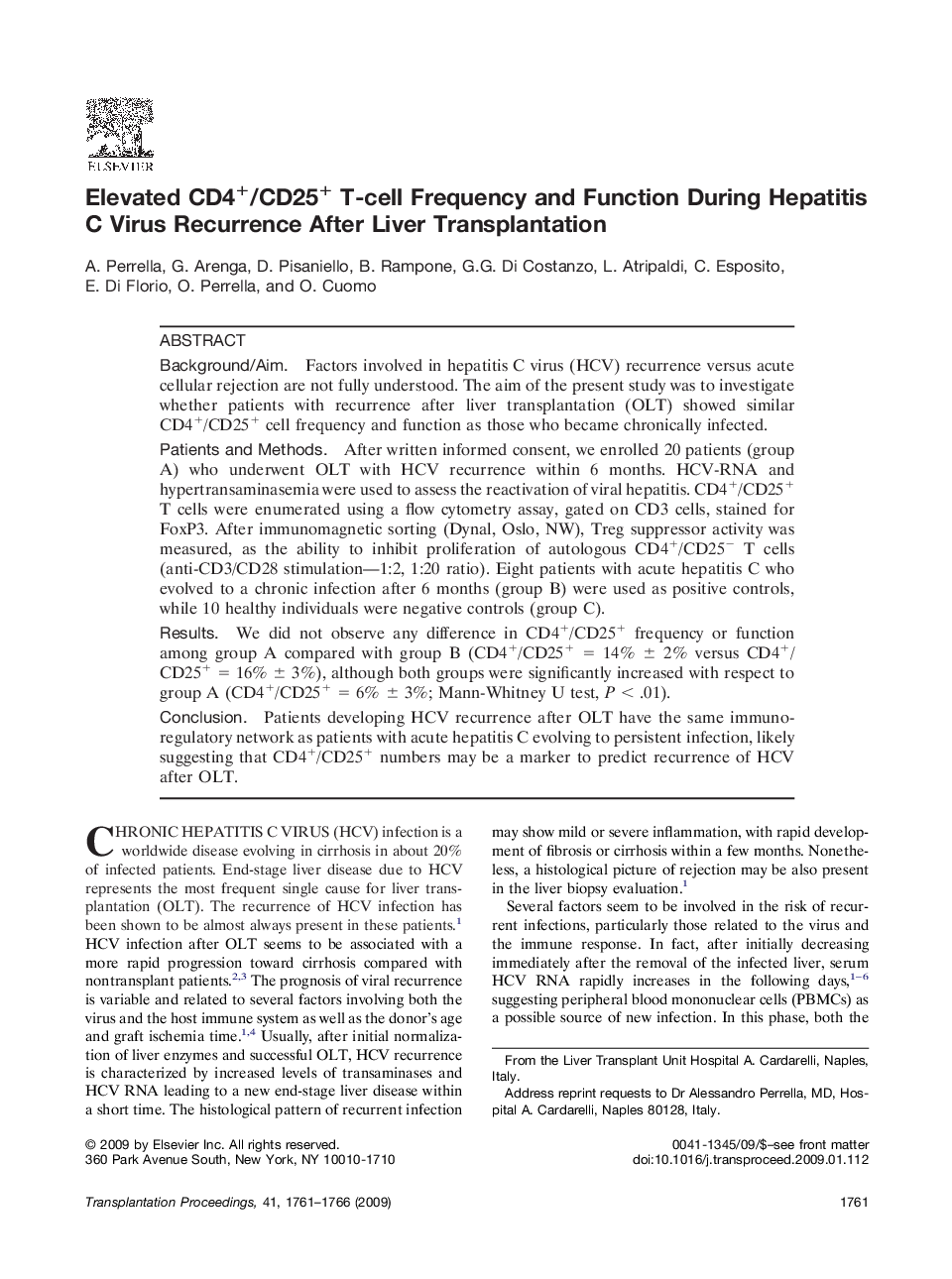| Article ID | Journal | Published Year | Pages | File Type |
|---|---|---|---|---|
| 4259281 | Transplantation Proceedings | 2009 | 6 Pages |
Background/AimFactors involved in hepatitis C virus (HCV) recurrence versus acute cellular rejection are not fully understood. The aim of the present study was to investigate whether patients with recurrence after liver transplantation (OLT) showed similar CD4+/CD25+ cell frequency and function as those who became chronically infected.Patients and MethodsAfter written informed consent, we enrolled 20 patients (group A) who underwent OLT with HCV recurrence within 6 months. HCV-RNA and hypertransaminasemia were used to assess the reactivation of viral hepatitis. CD4+/CD25+ T cells were enumerated using a flow cytometry assay, gated on CD3 cells, stained for FoxP3. After immunomagnetic sorting (Dynal, Oslo, NW), Treg suppressor activity was measured, as the ability to inhibit proliferation of autologous CD4+/CD25− T cells (anti-CD3/CD28 stimulation—1:2, 1:20 ratio). Eight patients with acute hepatitis C who evolved to a chronic infection after 6 months (group B) were used as positive controls, while 10 healthy individuals were negative controls (group C).ResultsWe did not observe any difference in CD4+/CD25+ frequency or function among group A compared with group B (CD4+/CD25+ = 14% ± 2% versus CD4+/CD25+ = 16% ± 3%), although both groups were significantly increased with respect to group A (CD4+/CD25+ = 6% ± 3%; Mann-Whitney U test, P < .01).ConclusionPatients developing HCV recurrence after OLT have the same immunoregulatory network as patients with acute hepatitis C evolving to persistent infection, likely suggesting that CD4+/CD25+ numbers may be a marker to predict recurrence of HCV after OLT.
